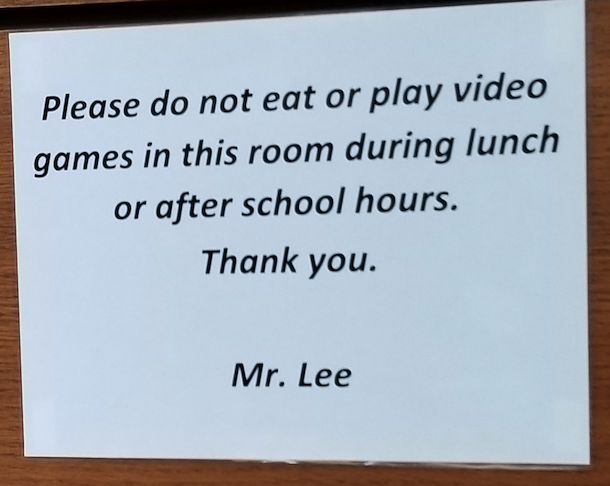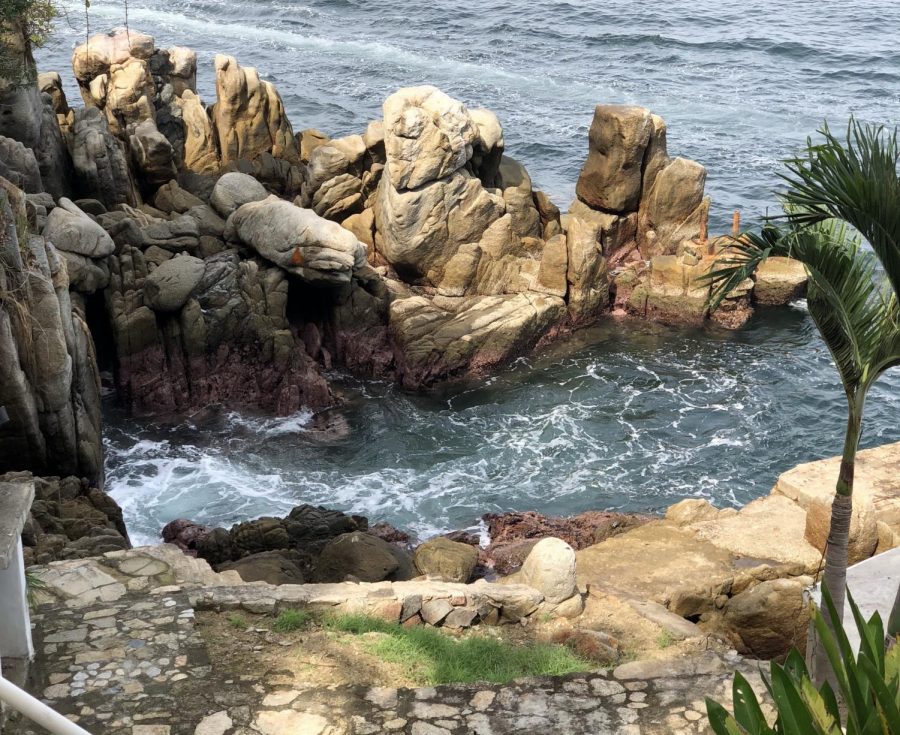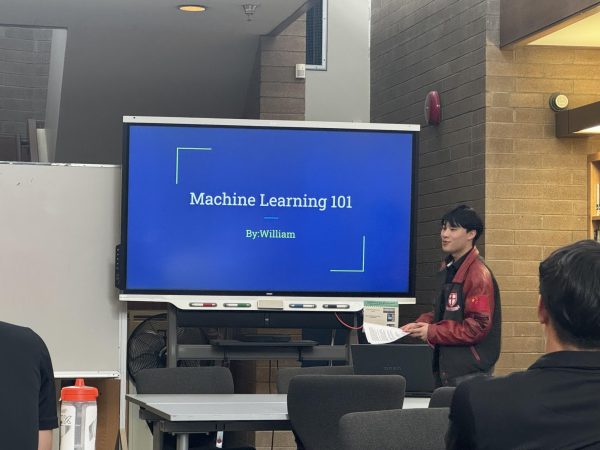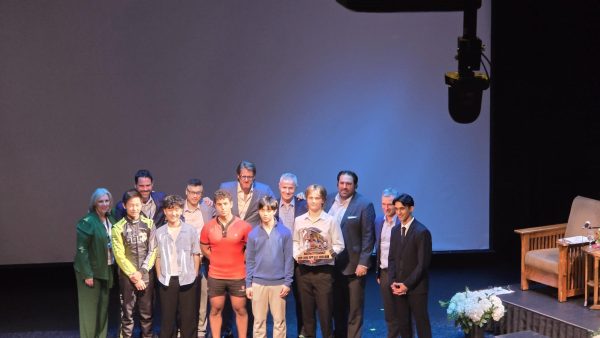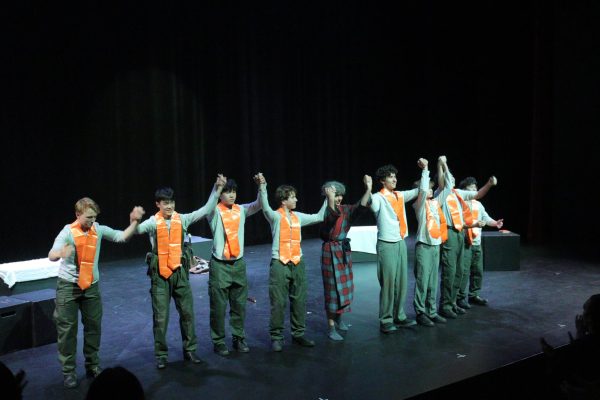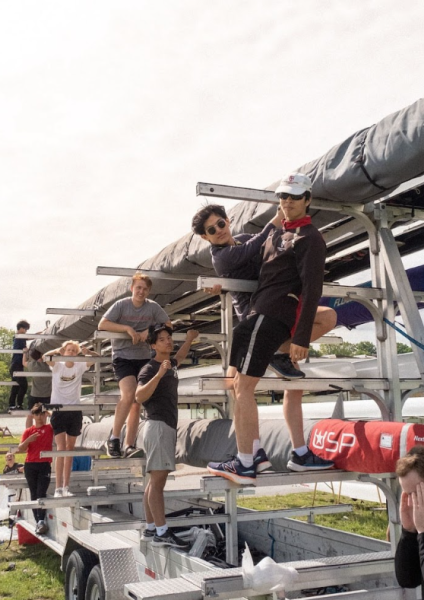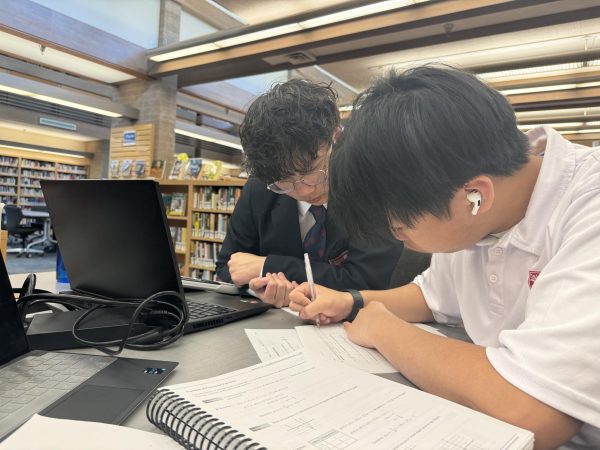Littering and Food Waste at St. George’s — Are there solutions?
Organizations like Global Stewardship at St. George’s can only do so much to solve environmental issues—a more inherent change in our mindset will lead to a greater improvement in the wellbeing of the St. George’s community.
In February 2017, Principal Jennifer Leighton of Granite Bay High School in California placed a ban on food deliveries in the public high school. Instead of dashing to the dining hall to line up during lunch, students now resort to pulling out their smartphones to summon a courier from the popular delivery service DoorDash. The chaos proved to be too much for the school administration to handle, with hallways “inundated” with couriers delivering “Panera bread and fresh sushi.”
Comparing this situation with that of St. George’s is a gross overstatement, but should measures be be taken to prevent this nightmarish scene?
How many times have you walked into a classroom at the senior school and found yourself disgusted at the mess left behind after lunch? Probably more than once. The problem of garbage disposal and food waste has been a long-persisting issue at St. George’s, and although immediate regulations have been implemented, there has not yet been any proposed long-term plans on resolving the issue.
What do the students think?
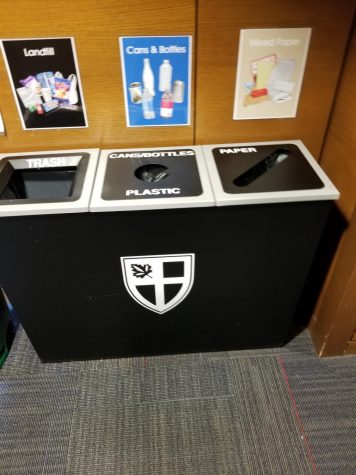
How hard is it to read the signs?
Earlier this year, Mike Delano (Grade 12) and the global stewardship conducted a waste audit in the school. The results: a “large portion of recyclables were being thrown into landfill instead of the recycling, despite there being a recycling bin directly next to most landfill bins in the school. We also found a large amount of compostable organics in the landfill as well.”
Mike concludes that not only does the inappropriate distribution of garbage “negatively impact student learning,” but it also “almost seems to be a part of the school culture” and a norm at Saints. Individuals from higher grades tend to attribute food waste and garbage to students in lower grades, but the reality is that there is a lack of care “shared by all grades.”
Haowen Qin, a member of the Global Stewardship Committee in grade 10 this year, expresses that while the problem may be “a common issue” across schools in Vancouver, it is surprisingly serious at St. George’s and is often overlooked by the student body.
Tony Zhang, the grade representative of grade 10 for this school year, has been organizing many food events and sales over the course of this year, and has discovered that students tend to be very “ignorant and careless” towards the way in which they treat the school environment, and that there is a predisposition of thinking that “there will always be somebody to clean up their mess.”
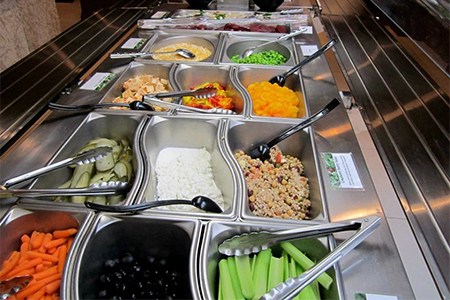
Many students justify their decision to order takeout by citing the “poor” quality of Sodexo food. While that belief does merit some consideration by the food services department, it certainly does not give students a reason to order food and leave a mess behind.
What do the teachers think?
Not only does the inordinate amount of garbage disrupt student life, it also impacts all other members of the St. George’s community, including staff and faculty.
Mrs. Heather Morris, the Head of Service Learning, has been very much involved in promoting environmental awareness in the school through service activities in weekly X-Block activities. Mrs. Morris expresses that “it is disappointing” how the student body “often do not demonstrate a community of caring in how we treat our school environment.” St. George’s provides “such beautiful spaces” for learning and growth, but it is unfortunate that many students do not treat those spaces with respect.
Ms. Coates, one of the leading teacher sponsor for global stewardship and environmental awareness, believes that “the idea of personal and shared wellness” is crucial to understanding the need of resolving environmental issues at the school. One of the core messages for global stewardship at St George’s is that members of the school “can make positive contributions, individually and in cooperation, to joyful, connected and healthy communities.”
Mr. Chapman, a social studies teacher and a service learning enthusiast, notes the “dreaded” atmosphere of “teaching in the fourth period” because there is “always half a sandwich or bread crumbs” and even “plates” brought down by students from McLean Hall, which often requires students to spend valuable class time cleaning up the mess left over from lunchtime. Not only does leaving food waste in communal areas, where large numbers of students circulate every day, represent “being lazy,” it also poses a serious “health problem” to the student body. Students with a common cold who leave plates and pieces of food behind can easily transmit germs to others in the area.
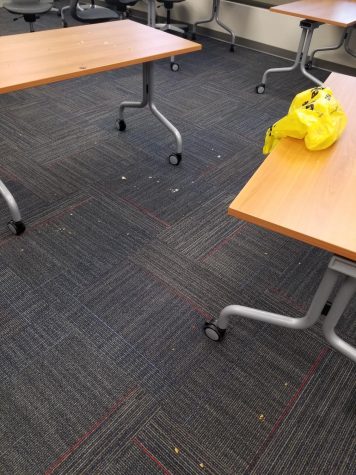
One of the many examples of a mess left over from lunchtime in a classroom on the second floor.
Long-Term Solutions?
Short-term solutions for such issues are relatively easier to enact and implement. Mr. Brian Lee, the Vice Principal of the Senior School, has already announced that all food deliveries are temporarily banned for this school year due to inordinate amounts of food waste and garbage found in communal areas like the Upper and Lower Great Hall. While this “emergency” solution has thus far proven to be effective, the real problem lies not simply in the amount of garbage, but in the inappropriate mindset of the student body. In order to address the issue for a long-existing mindset in the school, there must be more sustainable plans for the future.
From a Student Government Perspective
Tony Zhang, the grade 10 representative for this year, explained how food sales will undergo a significant change. “The biggest change will be on the packaging of deliveries,” Tony explains. “In the past, the plastic packaging has made a huge mess and it was extremely difficult for the janitors and cleaning staff to clean up. Starting this year, we will use eco-friendly and 100% biodegradable materials for packaging.”

From a Global Stewardship Perspective
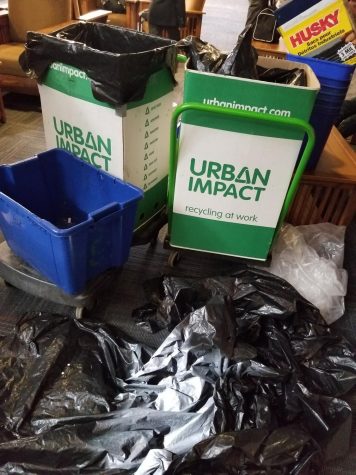
The work done by janitors at St. George’s is often overlooked by the student body.
Haowen, who was a speaker on climate change in the 2018 Global Stewardship Conference, expresses that “the heart of the problem” requires a fundamental shift in “attitudes and the mindset” in which students view their responsibility to appropriately dispose garbage.
One of the important aspects to note in finding solutions is the involvement of school clubs and the “behind the scenes” action. The Green Machine Club, for example, had students conduct waste audits and collect garbage before school. These students can be seen surveying the halls and communal spaces with heavy duty garbage bags, but are generally not recognized as environmental stewards. Not only are some students playing an important role in resolving this issue, teachers like Mr. Piller are also making operational and hardware changes in the school to better suit an eco-friendly style of energy consumption. These changes range from renewing electrical supplies in the school to better design the hallway lights to save energy.
From a Service Perspective
Service Learning has been very involved in raising environmental awareness, and one of the activities it has promoted over the course of this year was the X-Block. While the X-Block has already been running for two years, the focus of this year’s activities has primarily been on ecological preservation and solutions to global environmental problems. Every Wednesday, students are organized into groups, according to their Advisors, that are scheduled for a specific activity in or outside of school.
In-school activities of X-Block include watching documentary films in the seminar room, beekeeping, Green Chair Recycling, and the school store and garden tour. Out-of-school activities include Pacific Spirit Park Ivy Pulling (removing invasive species on a specific plot of land), UBC Sustainability Walking Tour, Musqueam Ecological Tour, and Dunbar garbage pick-up. These hands-on activities not only allowed students to learn more about solutions for daily environmental issues, but also doing so in a hands-on fashion, which often is a much more impactful and lasting way of fostering environmental awareness. Participating in such activities also provide a great learning environment, where students can have insightful discussions amongst themselves and with their advisors.
“Environmental awareness in a political way to the “problems” of environment, like waste, invasive species, pollution, only have context when we have a connection to the outdoors,” Ms. Coates explains. “We don’t all need to go into the backcountry every weekend to have that connection, but actively seeking a connection with the natural world around us is demonstrably decreasing.”
Although the entire student body has not yet realized a strong sense of responsibility towards global stewardship, baby steps are evident and will certainly aid the school community to stay positive. Despite the efforts from students, teachers and the school administration, a change in the way in which students approach these environmental issues will take time. The question now is: how long?

Jay began his journey at Saints back in Grade 6, when he was still a fledgling writer that was just starting to understand rudimentary narratives and essays....
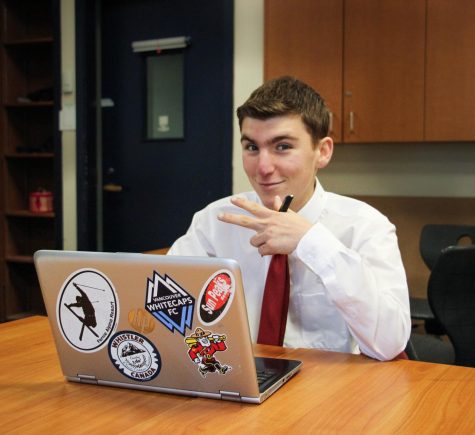
Currently in his senior year at St. George’s school in Vancouver, Ben began at The Creed in 2017. His main interests include athletics and writing,...




